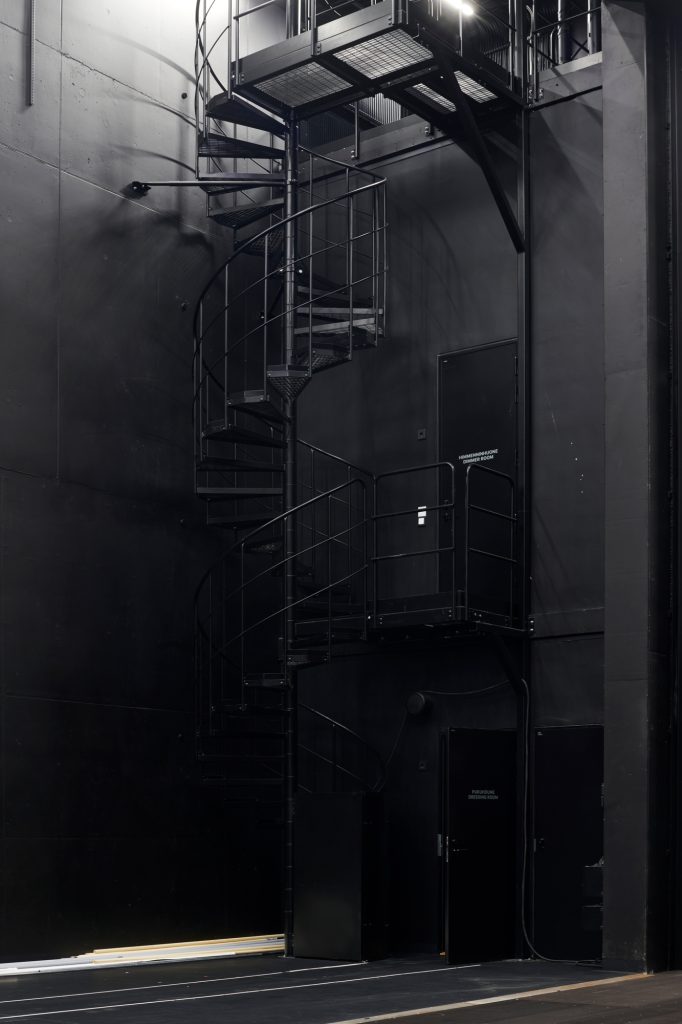A glazed courtyard and canopy of steel welcome visitors into Helsinki’s newly renovated cultural centre, on the site of a former factory that once produced 100m-long sea cables.
The Cable Factory, now home to Finland’s first and only dedicated Dance House, has loomed over Helsinki’s Ruoholahti neighbourhood since the 1940s and is the city’s largest cultural space. After telecoms company Nokia moved manufacturing to China in the 80s, creatives co-opted its vast, empty spaces for legendary (and illegal) midwinter raves, art studios, judo workshops and the city’s oldest weightlifting studio – still open around the clock.
Three decades later, this site of radical artist occupation houses several museum and gallery spaces, bookshops and cafes. And since March 2022, it has welcomed Dance House Helsinki – Finland’s first venue dedicated to dance at both grassroots and professional levels. Following years of lobbying, it is ‘a triumph of the dance community,’ says Managing Director Niki Matheson, ‘fulfilling the Nordic vision of a dance house’ set by venues in Denmark and Sweden.

Photographer: Louise Long

Photographer: Louise Long

Photographer: Louise Long

Photographer: Louise Long

Photographer: Louise Long

Photographer: Louise Long

Photographer: Louise Long

Photographer: Louise Long
Finnish practice JKMM designed Dance House Helsinki, affixing a polka dot armour of steel discs to the facade of the extension. Like pocket mirrors expanded to the size of televisions, these dots reflect the faces and seasons of both neighbourhood and the audience. ‘As if the building is in evening dress’, says chief architect Teemu Kurkela.
Once inside, flamboyance is all but stifled. This might be a space for movement, music, and performance (even circus), but any design instincts towards flowing or sinuous rhythms have been stamped out, with the elegant and the organic eschewed for the muscular and the mechanical. This is ‘a machine for dance’, Kurkela continues.
Through monolithic steel doors, visitors are syphoned from the Cable Factory’s glazed courtyard into the lobby of the Dance House itself, encased on one side by the former external brickwork and the other by a new lattice of suspended steel.

Historic graffiti clings to the walls, and signs and thermometers remain intact. And through either set of giant doors, two black box theatres are entered: the engines for dance.
Neutrality dictates both design and function – from the orientation of the stage to its acoustics. Nothing is determined until the performance unfolds. In the smaller of the two auditoriums – the former boiler room – mammoth coal funnels rise above state-of-the-art telescopic seating, heaven-bound spiral staircases and fly-grid lighting scaffolding. In the main auditorium, the gigantic stage (the largest purpose-built in the Nordics) leads directly out to a loading bay for trucks; a rare and underestimated logistical boon, notes Kurkela. Meanwhile, underground, the former bomb shelter offers itself up as a cloakroom space-cum-champagne bar. Brutalist concrete pillars attempt no niceties in welcoming guests into its depths.
‘We are not trying to make it too pretty, or not pretty at all’, says Kurkela.
This is not a building which makes excuses for itself or hesitates. The workings are there for all to see: entrails exposed, patina preserved, the scars of history fused with the machinery of the modern. What matters most is the potential for dance in all its forms. Mirage and masquerade, exhibitionism and extravagance are reserved for its artists.
Kaapeliaukio 3, 00180 Helsinki, Finland


























